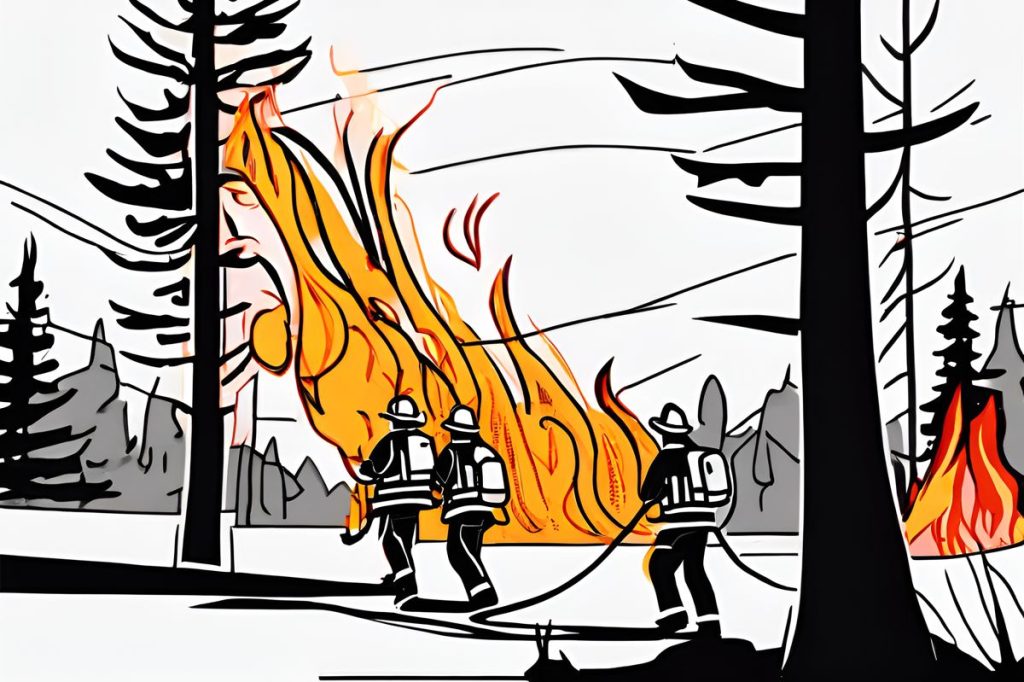The response to the fire in Limassol Forest involved deploying 10 fire trucks and 60 forest department officers, with a firefighting aircraft assisting containment efforts. Prompt action prevented the fire from consuming more than 1.5 donums of land, showcasing the effectiveness of swift and coordinated firefighting measures.
What was the response to the fire in Limassol Forest?
The response to the Limassol Forest fire involved deploying 10 fire trucks and 60 forest department officers. Additionally, a firefighting aircraft was dispatched to assist in the containment efforts. These measures were taken promptly upon the early morning detection of the blaze, effectively preventing the fire from consuming more than 1.5 donums of land.
Urgent Response to the Blaze
A fire erupted within the Parekklisia state forest in Limassol on a Wednesday morning, igniting concern and a swift response. As the dawn gave way to daylight, a distressing haze signaled the onset of an environmental challenge. By 9:50 am, flames were spreading, compelling immediate action. With the deployment of 10 fire trucks and a team of 60 forest department officers, the containment efforts commenced.
Amid the crackle and heat, an aerial ally joined the fray. A firefighting aircraft, dispatched with precision, took to the skies, a crucial component in the multifaceted approach to douse the inflamed terrain. The initial toll was 1.5 donums of land, a testament to the fire’s rapid onset, but a figure kept from rising by the relentless efforts of those on the ground and in the air.
The Fight Against Forest Fires
Forest fires are a devastating force, posing threats not only to the natural flora and fauna but also to human settlements in proximity. They often begin unnoticed but can escalate quickly under dry and windy conditions. In regions like Limassol, where the Mediterranean climate engenders hot, arid summers, the risk of forest fires is heightened, necessitating constant vigilance.
The battle against such blazes is fought with advanced technologies and strategies. Tools like geographic information systems (GIS) for mapping fire-prone areas, satellite monitoring for early detection, and predictive modeling for understanding fire behavior are integral to modern firefighting. These technological advancements, coupled with the courage and swift action of firefighters, create a formidable defense against the ravages of wildfires.
Environmental Impact and Recovery
In the aftermath of a forest fire, the scorched earth speaks to the immediate damage incurred; however, the environmental repercussions extend far beyond the visible char. The loss of vegetation disrupts local ecosystems, affecting biodiversity and wildlife habitats. Soil erosion, a secondary consequence, can lead to further degradation of the landscape and water quality issues.
Recovery is a slow process, often taking years for a forest to regenerate fully. Reforestation efforts are critical, as they not only restore the natural landscape but also mitigate climate change by sequestering carbon dioxide. Involving the community in these recovery endeavors can foster a sense of environmental stewardship and promote ecological resilience.
Prevention and Public Awareness
Preventative measures play a crucial role in mitigating the risk of future forest fires. Public campaigns to raise awareness about fire hazards, and the importance of responsible land use, are vital. These include guidelines on avoiding activities that could ignite a fire, such as campfires or discarding cigarettes in dry areas.
Investment in infrastructure, such as creating firebreaks and improving water sources for firefighting, can significantly reduce the spread and intensity of fires. Training and equipping local communities to respond effectively to fires can also enhance the overall capacity to protect the forested areas that are so integral to the environmental health and cultural heritage of the region.
What was the response to the fire in Limassol Forest?
The response to the Limassol Forest fire involved deploying 10 fire trucks and 60 forest department officers. Additionally, a firefighting aircraft was dispatched to assist in the containment efforts. These measures were taken promptly upon the early morning detection of the blaze, effectively preventing the fire from consuming more than 1.5 donums of land.
Why are forest fires a significant concern in regions like Limassol?
Forest fires pose a significant concern in regions like Limassol due to the hot, arid summers characteristic of Mediterranean climates. These conditions create dry and windy environments that are highly susceptible to the rapid spread of fires. The risk of forest fires threatens not only the natural flora and fauna but also human settlements in proximity.
What are some of the environmental impacts of forest fires?
Forest fires have various environmental impacts, including the loss of vegetation disrupting local ecosystems and affecting biodiversity and wildlife habitats. Additionally, soil erosion can occur, leading to further landscape degradation and water quality issues. The recovery process post-fire can take years, with reforestation efforts being crucial to restoring the natural landscape and mitigating climate change by sequestering carbon dioxide.
What are some strategies for preventing forest fires and raising public awareness?
Preventative measures for forest fires include public campaigns to raise awareness about fire hazards and responsible land use. Guidelines on avoiding activities that could ignite fires, such as campfires or discarding cigarettes in dry areas, are essential. Investing in infrastructure like firebreaks and improving water sources for firefighting can reduce the spread and intensity of fires. Training and equipping local communities to respond effectively to fires also enhance overall capacity to protect forested areas.

